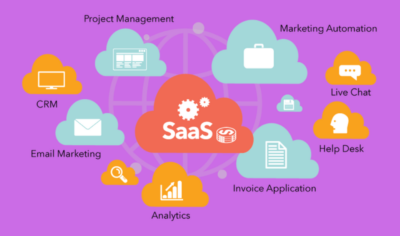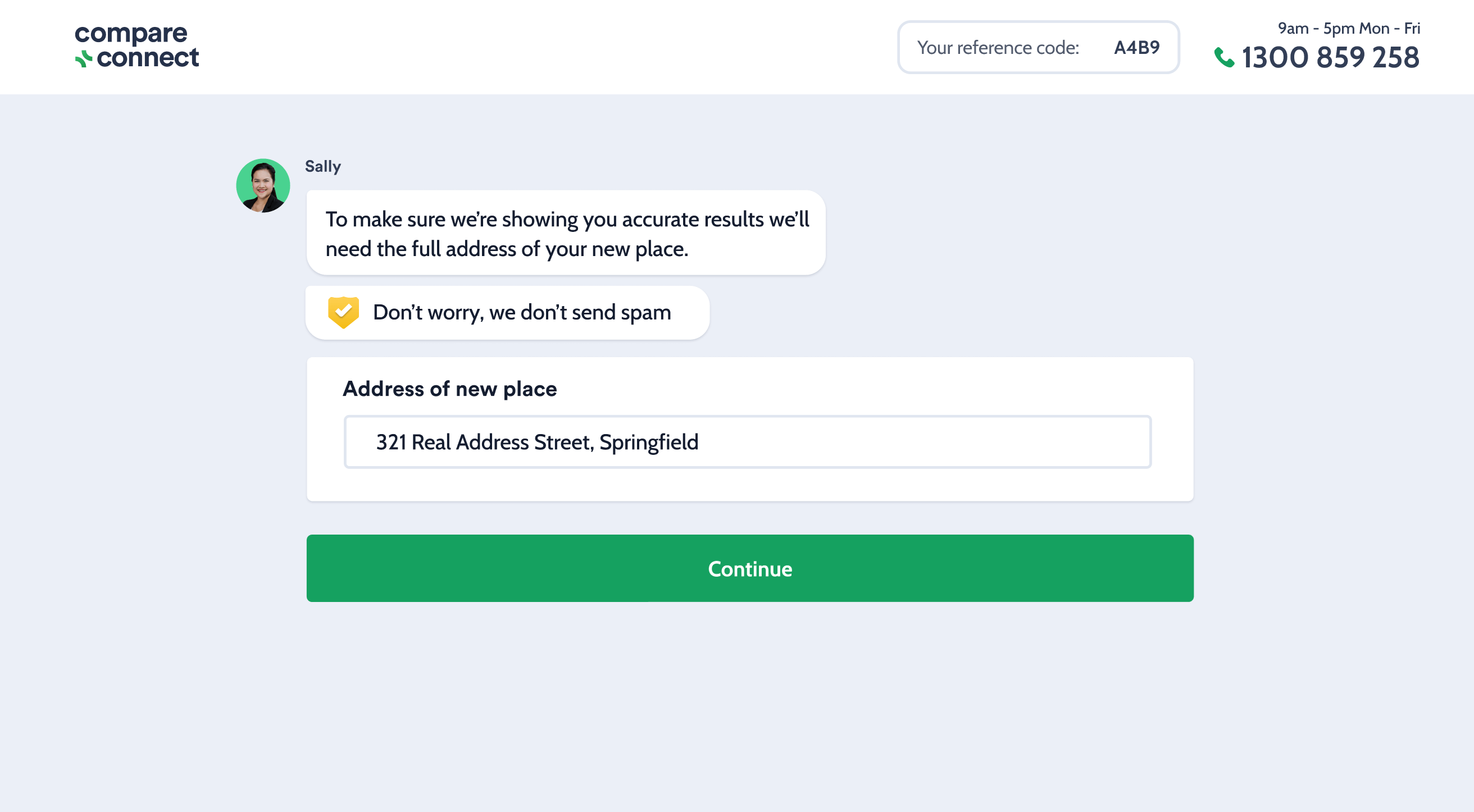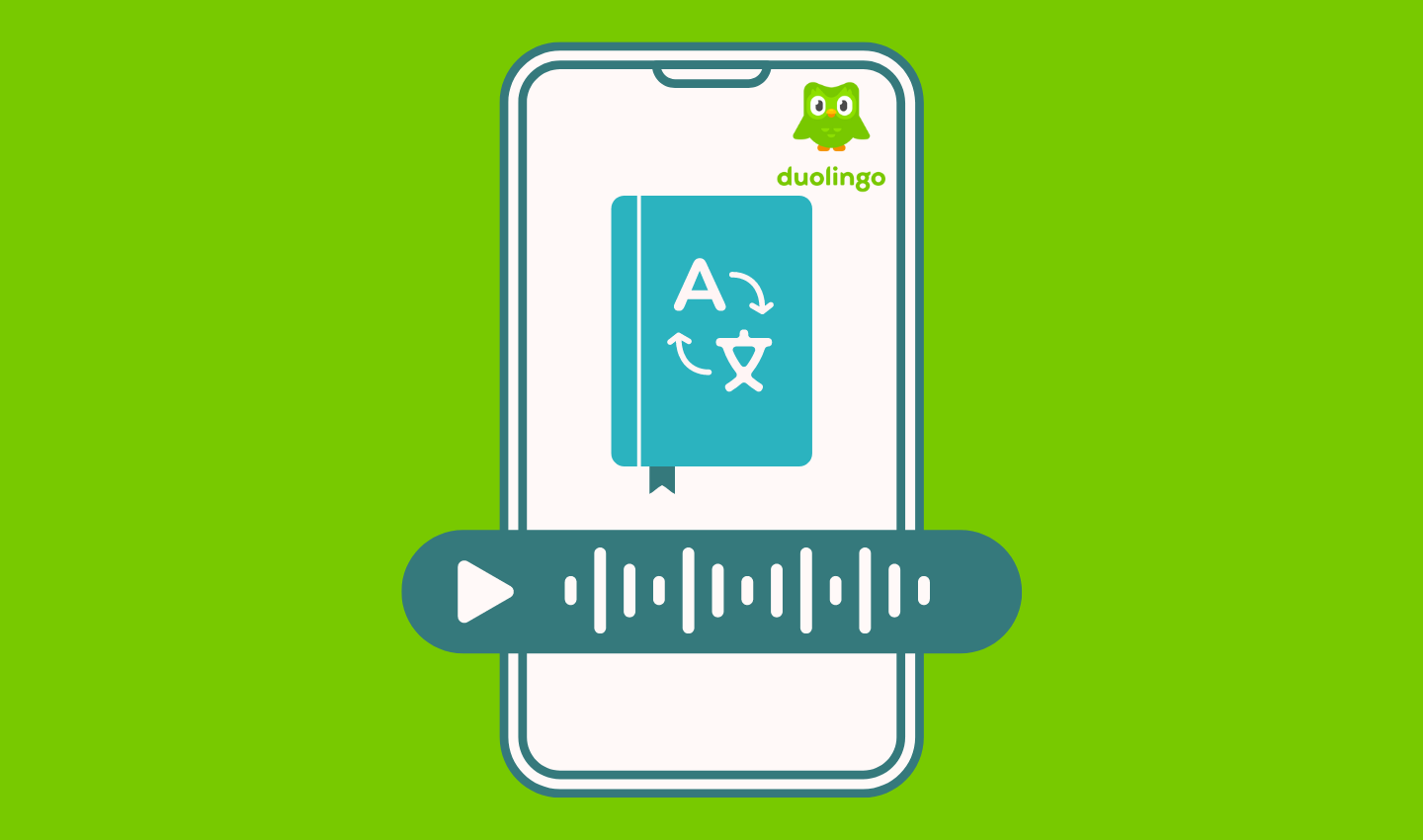
The End of Duolingo? How ChatGPT-4 is Taking Over Language Learning!
In an era where artificial intelligence (AI) is rapidly transforming industries, the landscape of employment is witnessing unprecedented shifts. One of the most notable recent events is Duolingo’s decision to lay off thousands of employees after integrating ChatGPT-4 into their operations. This blog post delves into the ramifications of this decision, exploring the studies on AI and employment, and discussing its impact on user experience.
Table of Contents
The Rise of AI in Language Learning

Duolingo, launched in 2011, has become synonymous with language learning apps. Its colorful interface, bite-sized lessons, and gamification elements have made it a favorite for users looking to learn new languages or brush up on their skills. As of 2023, Duolingo boasts over 500 million registered users, with around 40 million active monthly users, learning over 30 languages.
ChatGPT, developed by OpenAI, represents a new frontier in artificial intelligence. Released in various iterations since 2019, it leverages machine learning to understand and generate human-like text based on the input it receives. Unlike Duolingo, which follows a structured curriculum, ChatGPT offers real-time, interactive conversations, simulating a dialogue with a native speaker.
Duolingo has long been at the forefront of utilizing technology to enhance educational experiences. With the advent of ChatGPT-4, Duolingo saw an opportunity to leverage this advanced AI to streamline operations, improve language learning tools, and provide more personalized user experiences. However, this technological advancement has come with significant human costs.
The Layoffs: A Closer Look
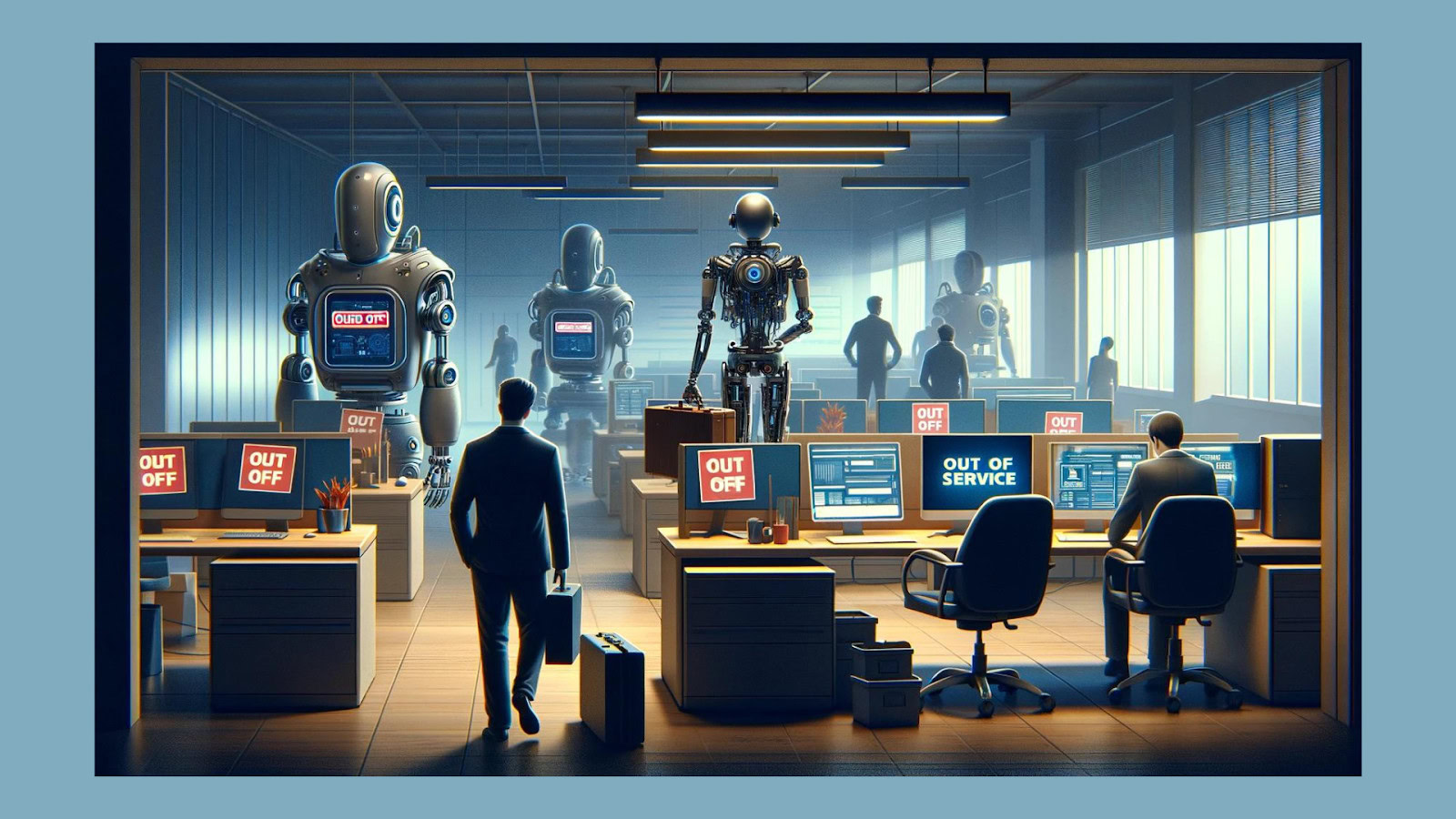
In a move that sent shockwaves through the tech and education sectors, Duolingo announced the layoffs of thousands of employees. This decision was driven by the company’s integration of ChatGPT-4, which significantly reduced the need for human resources in various departments, including customer service, content creation, and educational support.
Reasons Behind the Layoffs
The primary reason behind these layoffs is the increased efficiency and cost-effectiveness brought about by ChatGPT-4. By automating tasks that were previously handled by humans, Duolingo can now manage a higher volume of queries and generate educational content at a fraction of the cost. This move is part of a broader strategy to optimize operations and enhance profitability in a competitive market.
Impact on the Workforce
The impact on Duolingo’s workforce has been profound. Thousands of employees who were once integral to the company’s operations have been made redundant. This has not only affected their livelihoods but also their sense of professional identity and community. For many, Duolingo was more than just a job; it was a place where they felt they were contributing to a larger mission of making education accessible to all.

Industry Reactions
The layoffs at Duolingo have drawn attention from industry experts and analysts. Some view this as a natural progression in the evolution of technology, where efficiency and innovation drive business decisions. Others express concern about the broader implications for the labor market, particularly in tech-heavy industries where AI adoption is accelerating. The situation at Duolingo is seen as a case study in the complex dynamics between technological advancement and human employment.
AI and Employment: A Complex Relationship
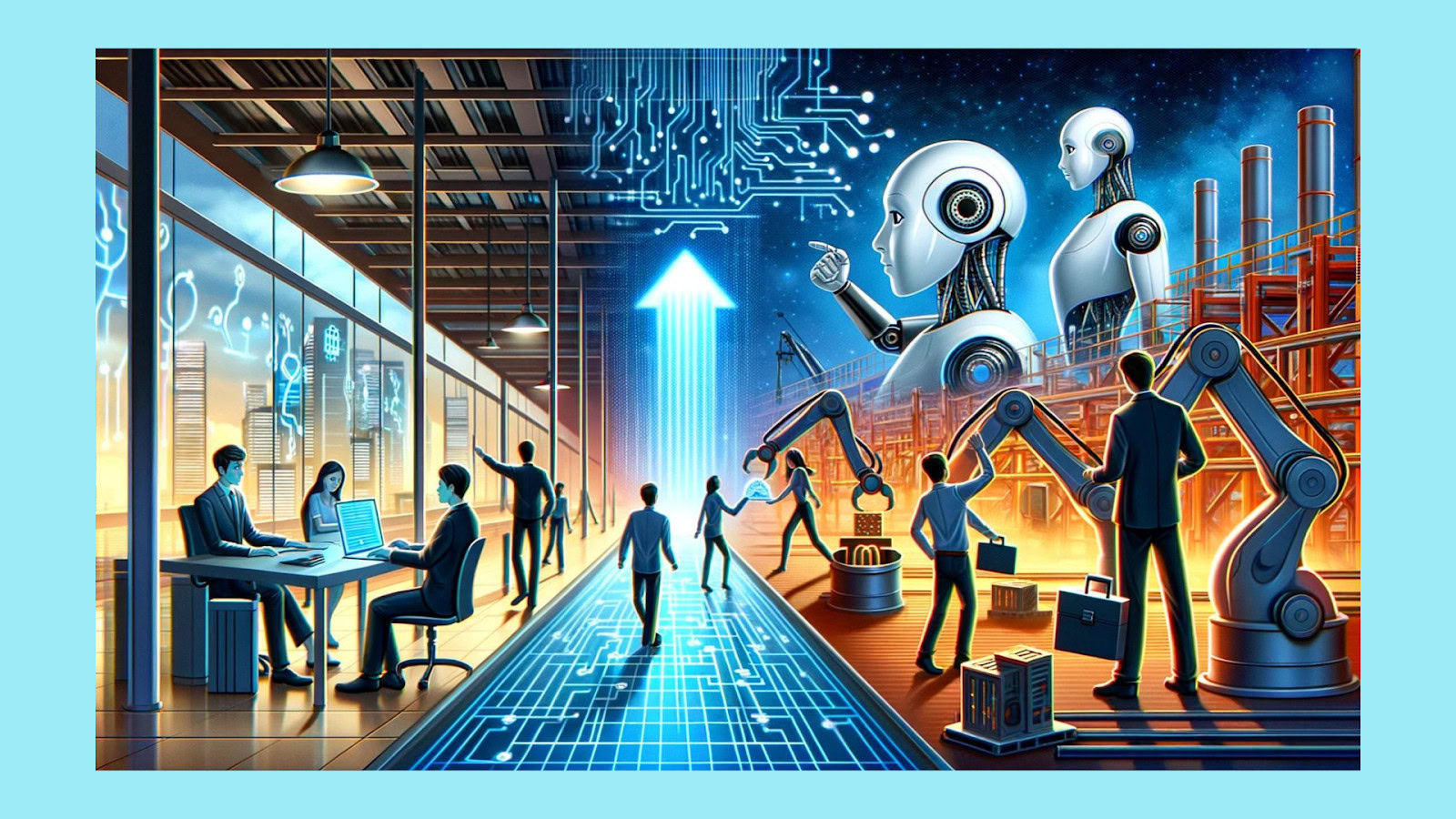
The relationship between AI and employment is multifaceted and often controversial. Numerous studies have highlighted both the potential benefits and drawbacks of AI integration in the workforce.
The Positive Impacts
AI can perform tasks faster and more accurately than humans. For example, a study by McKinsey & Company found that AI could potentially boost productivity by up to 40% across various industries.
By automating repetitive and mundane tasks, companies can significantly reduce operational costs. A report by PwC estimated that AI could contribute up to $15.7 trillion to the global economy by 2030 through cost savings and productivity improvements.
AI can provide personalized recommendations and support, improving user satisfaction. For instance, a study published in the Journal of Consumer Research indicated that AI-driven personalization could enhance customer loyalty and engagement.

The Negative Impacts
One of the most significant concerns is the displacement of human workers. The World Economic Forum’s Future of Jobs Report 2020 predicted that AI and automation could displace 85 million jobs by 2025, even as they create 97 million new roles.
The transition to an AI-driven workforce requires new skills, leading to a mismatch between available jobs and the skill sets of current employees. The MIT Technology Review highlighted that many workers might find it challenging to transition to new roles without substantial retraining.
The benefits of AI might not be evenly distributed, potentially exacerbating economic inequalities. A study by the Brookings Institution pointed out that AI adoption could disproportionately impact lower-wage jobs, widening the income gap.
Duolingo’s Case: A Microcosm of a Larger Trend
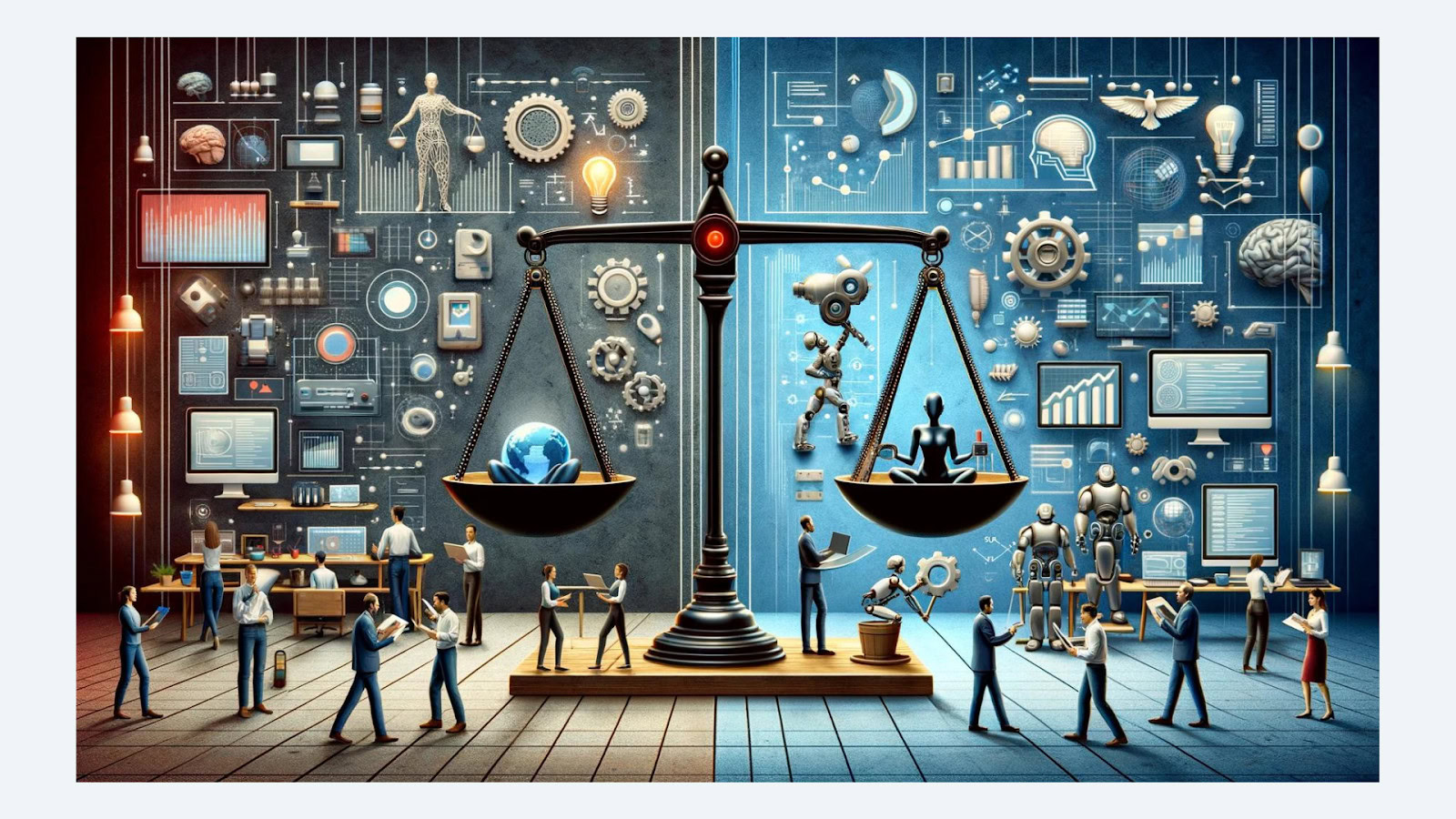
Duolingo’s decision to integrate ChatGPT-4 and subsequently lay off a significant portion of its workforce is a microcosm of a larger trend. Many companies are turning to AI to stay competitive, often at the expense of their human workforce.
With ChatGPT-4, Duolingo has managed to automate various aspects of its service. The AI can handle customer inquiries, provide language learning support, and even create new educational content. This automation has undoubtedly increased operational efficiency and reduced costs.
However, the human cost of these efficiency gains is substantial. Thousands of employees, many of whom have contributed significantly to Duolingo’s success, now find themselves without jobs. This situation raises important ethical and social questions about the role of AI in the workplace.
The Impact on User Experience
The integration of ChatGPT-4 into Duolingo’s platform has ushered in a new era of personalized language learning. However, the impact on user experience extends beyond the initial benefits and challenges. Here, we explore deeper aspects of how AI integration is reshaping the user journey on Duolingo.
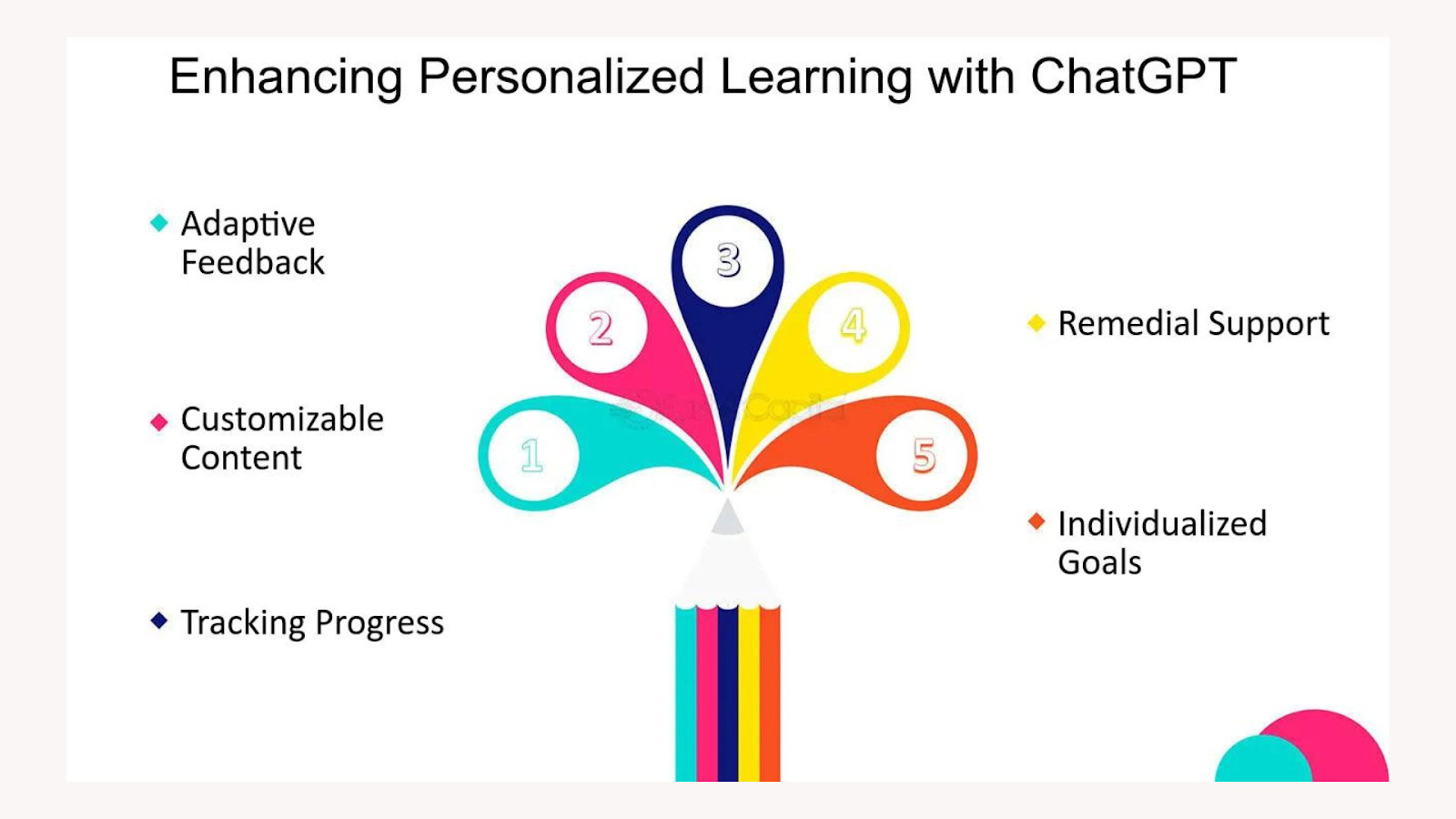
Personalized Learning Paths
One of the standout features of ChatGPT-4 is its ability to create highly personalized learning paths for users. By analyzing a learner’s progress, strengths, and weaknesses, the AI can tailor lessons that target specific areas for improvement. This personalized approach ensures that users are not only engaged but also making meaningful progress. Research from the International Journal of Artificial Intelligence in Education found that personalized AI tutoring systems improved learning efficiency and retention rates among students.
Real-Time Feedback and Support
ChatGPT-4 provides real-time feedback and support, a feature that is crucial for language learners. Immediate corrections and explanations help users understand their mistakes and learn from them instantly. This instant feedback loop is akin to having a personal tutor available at all times, which can accelerate the learning process and keep users motivated. Furthermore, AI’s ability to simulate conversations and provide contextual responses helps learners practice real-life scenarios, enhancing their practical language skills.
Consistency and Reliability
One of the critical advantages of AI over human educators is consistency. AI can deliver uniform quality in lessons and responses, eliminating the variability that might come from different human tutors. This consistency ensures that every user, regardless of when they access the platform, receives the same high-quality educational content. This reliability is particularly important for maintaining user trust and satisfaction over time.
User Engagement and Retention
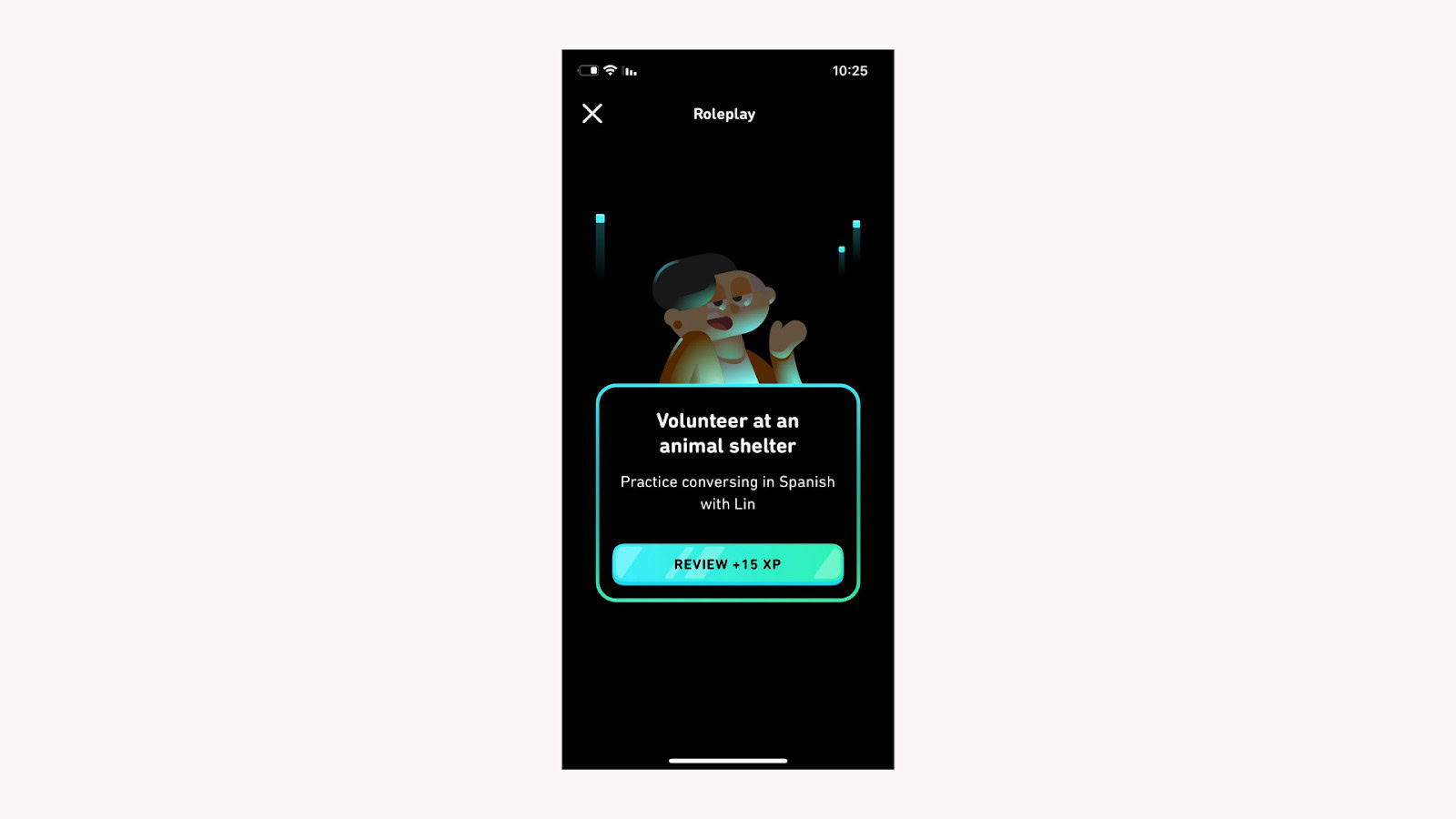
Engagement is a vital component of the user experience, especially in educational platforms where sustained effort is required for success. ChatGPT-4’s ability to gamify the learning experience, offer rewards, and provide motivational nudges can significantly enhance user engagement. A study in the Journal of Educational Psychology highlighted that gamification in education can increase student engagement and motivation, leading to better learning outcomes. By incorporating these elements, Duolingo can keep its users invested in their language learning journey, improving retention rates.
Addressing Emotional and Social Needs
Despite its many strengths, AI still falls short in addressing the emotional and social needs of learners. Human educators can offer empathy, encouragement, and understanding that AI cannot fully replicate. These human elements are particularly important for learners who may feel frustrated or demotivated. Duolingo must find ways to integrate human interaction into the AI-driven model to ensure that users receive the emotional support they need. This could involve hybrid models where AI handles routine tasks, and human educators step in for more personalized and emotional support.
Privacy and Ethical Considerations
The extensive use of AI raises significant privacy and ethical concerns. Users need to trust that their data is being handled responsibly and securely. Duolingo must implement robust data protection measures and be transparent about how user data is collected, stored, and used. Additionally, ethical considerations around AI biases must be addressed to ensure that all users receive fair and unbiased support. A study by the AI Now Institute emphasized the importance of transparency and accountability in AI systems to build user trust and prevent misuse of data.
The Future of Work: Balancing AI and Human Labor
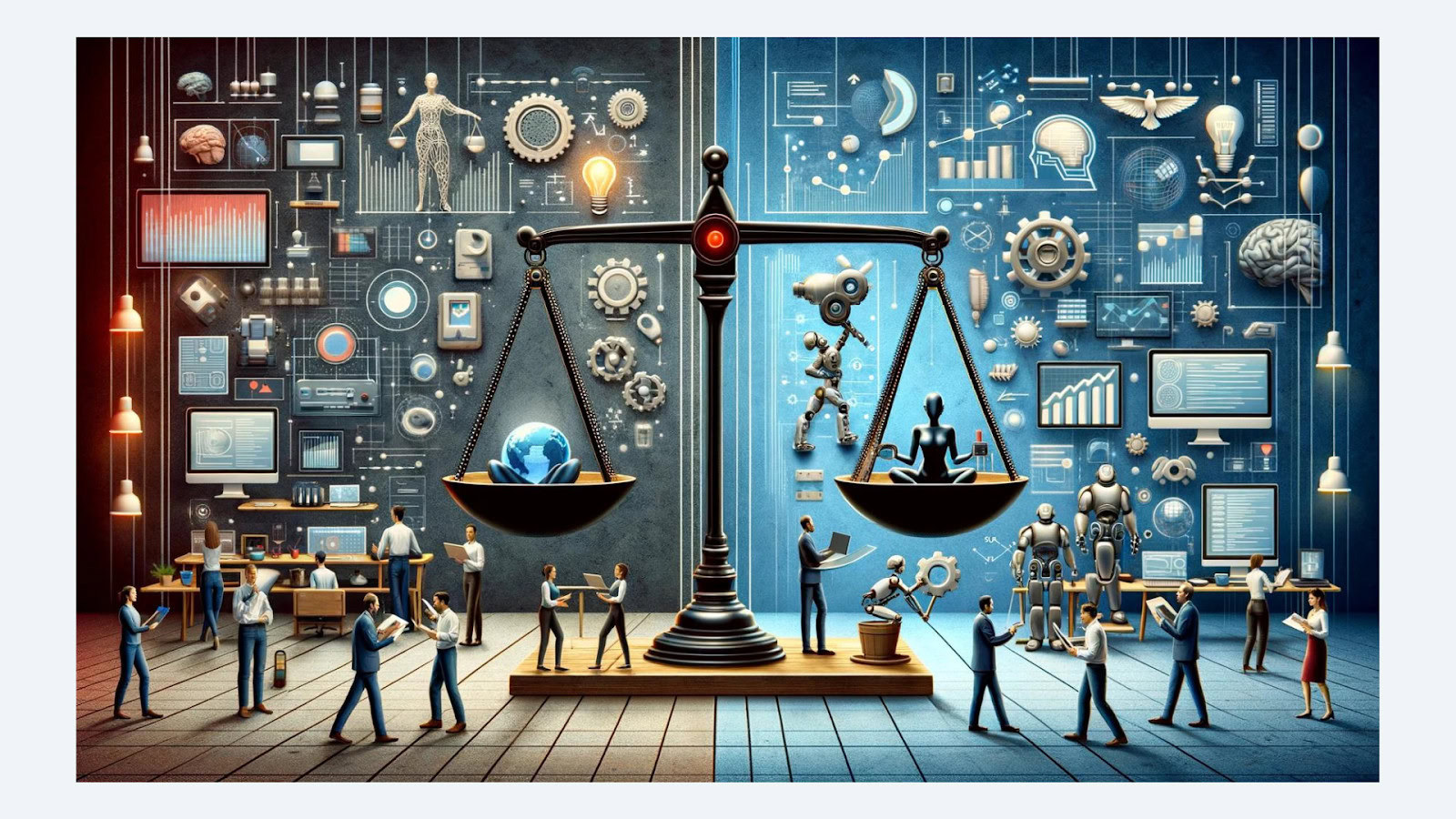
The case of Duolingo underscores the need for a balanced approach to AI integration. While AI offers numerous benefits, it is crucial to address the challenges it poses, particularly in terms of employment and user experience.
Strategies for Mitigating Negative Impacts
Companies should invest in reskilling and upskilling their workforce to prepare them for new roles created by AI. Government and private sector initiatives can provide training programs to bridge the skill gap.
Developing ethical guidelines for AI deployment can help ensure that the technology is used responsibly. This includes considering the social and economic impacts of AI on the workforce.
Instead of replacing human workers, companies can explore ways to augment human capabilities with AI. This collaborative approach can enhance productivity while preserving jobs.
Governments can play a crucial role in managing the transition to an AI-driven economy. Policies such as universal basic income, job guarantees, and social safety nets can provide support to displaced workers.
Conclusion
The AI layoffs at Duolingo mark a significant moment in the ongoing evolution of work. While AI technologies like ChatGPT-4 offer remarkable benefits in terms of efficiency and user experience, they also bring substantial challenges, particularly regarding employment and the human touch in service delivery.
As we move forward, it is imperative to strike a balance between leveraging AI’s capabilities and addressing its impacts on the workforce. By investing in reskilling, promoting ethical AI deployment, fostering human-AI collaboration, and implementing supportive policies, we can navigate this transition in a way that maximizes benefits while minimizing harm.
The journey towards an AI-driven future is complex and multifaceted. However, by thoughtfully managing this transition, we can harness the power of AI to create a more efficient, personalized, and inclusive world of work.
Take your company to the next level and get results with our world class user experience, interface design and implementation.
Get a FREE 30 min Strategy Session

Related posts
Airbnb’s Feature Release: What can we learn from it?
Airbnb consumer behaviour has shifted and inspired product changes, with their most recent feature release being the talk of the […]
3 Ways to Increase Customer Loyalty with UX
To put it simply, no customers = no business Gaining and retaining customers is such a crucial component to a […]
Prototyping: A Startup Founder’s Secret to Success
We’ve had so many grass-root startups come up to us with an extraordinary product idea but don’t know where to […]
Creative product design that gets results
Take your company to the next level with world class user experience and interface design.
get a free strategy session
